 Zinc deficiency can affect the immune system, cognitive function, and growth in children. Severe zinc deficiency can cause diarrhea, hair loss, poor appetite, skin disorders, impotence, and changes in taste. People who drink alcohol in excess are at high risk for zinc deficiency (and other health problems). This 2-page fact sheet was written by Linda B. Bobroff, and published by the UF Department of Family Youth and Community Sciences, July 2013.
Zinc deficiency can affect the immune system, cognitive function, and growth in children. Severe zinc deficiency can cause diarrhea, hair loss, poor appetite, skin disorders, impotence, and changes in taste. People who drink alcohol in excess are at high risk for zinc deficiency (and other health problems). This 2-page fact sheet was written by Linda B. Bobroff, and published by the UF Department of Family Youth and Community Sciences, July 2013.
http://edis.ifas.ufl.edu/fy218
Tag: Linda B. Bobroff
Living with Diabetes: Keeping Track of Your Blood Glucose
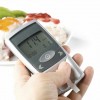 Living with diabetes involves setting goals, adjusting your lifestyle to meet your treatment goals, evaluating your progress, and changing practices as needed. One key goal of diabetes management is to attain glycemic (blood glucose) control to reduce the risk of health complications. Healthy lifestyle practices, such as eating well, engaging in physical activity, and using medications as prescribed, contribute to glycemic control and to an overall healthy life. This 3-page fact sheet was written by Linda B. Bobroff, and published by the UF Department of Family Youth and Community Sciences, June 2013.
Living with diabetes involves setting goals, adjusting your lifestyle to meet your treatment goals, evaluating your progress, and changing practices as needed. One key goal of diabetes management is to attain glycemic (blood glucose) control to reduce the risk of health complications. Healthy lifestyle practices, such as eating well, engaging in physical activity, and using medications as prescribed, contribute to glycemic control and to an overall healthy life. This 3-page fact sheet was written by Linda B. Bobroff, and published by the UF Department of Family Youth and Community Sciences, June 2013.
http://edis.ifas.ufl.edu/fy1144
Food Safety: Play it Safe with Eggs
 Fresh eggs may contain bacteria that can cause salmonellosis. This foodborne illness causes vomiting and diarrhea. It can be severe and even fatal in older adults. Reduce your risk for this foodborne illness by following these guidelines. This 1-page fact sheet was written by Linda B. Bobroff and Jennifer Hillan, and published by the UF Department of Family Youth and Community Sciences, June 2013.
Fresh eggs may contain bacteria that can cause salmonellosis. This foodborne illness causes vomiting and diarrhea. It can be severe and even fatal in older adults. Reduce your risk for this foodborne illness by following these guidelines. This 1-page fact sheet was written by Linda B. Bobroff and Jennifer Hillan, and published by the UF Department of Family Youth and Community Sciences, June 2013.
http://edis.ifas.ufl.edu/fy193
Healthy Eating: Calcium / Alimentación Saludable: Calcio
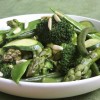 Calcium is the major mineral found in your bones and teeth. Many older adults don’t get enough calcium from the foods they eat. This can lead to bone loss and the bone disease osteoporosis. Osteoporosis puts people at high risk for bone fractures. These 1-page, large print fact sheets were written by Linda B. Bobroff, and published by the UF Department of Family Youth and Community Sciences, June 2013.
Calcium is the major mineral found in your bones and teeth. Many older adults don’t get enough calcium from the foods they eat. This can lead to bone loss and the bone disease osteoporosis. Osteoporosis puts people at high risk for bone fractures. These 1-page, large print fact sheets were written by Linda B. Bobroff, and published by the UF Department of Family Youth and Community Sciences, June 2013.
English: http://edis.ifas.ufl.edu/fy057
Spanish: http://edis.ifas.ufl.edu/fy058
Living Well to Keep Your Pressure Down (FCS8690/FY305)
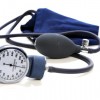 High blood pressure, or hypertension, can cause serious health problems. It makes your heart work harder and can damage your blood vessels even if you feel okay. Everyone should have their blood pressure checked regularly. If you have certain risk factors you are more likely to have high blood pressure. Follow these recommendations to help reduce your risk for high blood pressure. This 6-page fact sheet was written by Linda B. Bobroff, and published by the UF Department of Family Youth and Community Sciences, January 2013.
High blood pressure, or hypertension, can cause serious health problems. It makes your heart work harder and can damage your blood vessels even if you feel okay. Everyone should have their blood pressure checked regularly. If you have certain risk factors you are more likely to have high blood pressure. Follow these recommendations to help reduce your risk for high blood pressure. This 6-page fact sheet was written by Linda B. Bobroff, and published by the UF Department of Family Youth and Community Sciences, January 2013.
http://edis.ifas.ufl.edu/fy305
Healthy Living: Tips for Staying Regular (FCS8565/FY072)
 Constipation means having a bowel movement fewer than three times a week. Stools are usually hard and can be painful to pass. Constipation is common among older adults.This 1-page fact sheet was written by Linda B. Bobroff, and published by the UF Department of Family Youth and Community Sciences, January 2013.
Constipation means having a bowel movement fewer than three times a week. Stools are usually hard and can be painful to pass. Constipation is common among older adults.This 1-page fact sheet was written by Linda B. Bobroff, and published by the UF Department of Family Youth and Community Sciences, January 2013.
http://edis.ifas.ufl.edu/fy072
Healthy Eating: Folate (FCS8567/FY066)
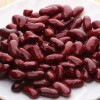 Folate is one of the B vitamins. It is involved in the formation of DNA, the genetic material found in all cells of your body. Folate is an important nutrient for everyone. It is especially important for pregnant and nursing women, growing children, and older adults. Health problems may result if people do not get enough folate. This 2-page fact sheet was written by Linda B. Bobroff, and published by the UF Department of Family Youth and Community Sciences, October 2012.
Folate is one of the B vitamins. It is involved in the formation of DNA, the genetic material found in all cells of your body. Folate is an important nutrient for everyone. It is especially important for pregnant and nursing women, growing children, and older adults. Health problems may result if people do not get enough folate. This 2-page fact sheet was written by Linda B. Bobroff, and published by the UF Department of Family Youth and Community Sciences, October 2012.
http://edis.ifas.ufl.edu/fy066
Healthy Meal Plans (FCS8750/FY522)
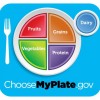 A meal plan is a guide to help you plan daily meals and snacks. It allows you to eat foods you enjoy and that provide a good balance of nutrients for your health. Meal plans can be used by anyone interested in healthy eating. They are very helpful for people who want to manage their weight.This 20-page fact sheet was written by Linda B. Bobroff, and published by the UF Department of Family Youth and Community Sciences, October 2012.
A meal plan is a guide to help you plan daily meals and snacks. It allows you to eat foods you enjoy and that provide a good balance of nutrients for your health. Meal plans can be used by anyone interested in healthy eating. They are very helpful for people who want to manage their weight.This 20-page fact sheet was written by Linda B. Bobroff, and published by the UF Department of Family Youth and Community Sciences, October 2012.
http://edis.ifas.ufl.edu/fy522
Preventing Childhood Obesity through Physical Activity (FAR8038/FM252)
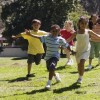 “Many parents are concerned about rising rates of childhood obesity. It’s important to keep a healthy perspective on the situation and not overreact with overly restrictive approaches that can do more harm than good. One way to promote healthy weights in children is to help them to be physically active.” This 2-page Family Album Radio transcript was written by Linda Bobroff, and published by the UF Department of Family Youth and Community Sciences, September 2012.
“Many parents are concerned about rising rates of childhood obesity. It’s important to keep a healthy perspective on the situation and not overreact with overly restrictive approaches that can do more harm than good. One way to promote healthy weights in children is to help them to be physically active.” This 2-page Family Album Radio transcript was written by Linda Bobroff, and published by the UF Department of Family Youth and Community Sciences, September 2012.
http://edis.ifas.ufl.edu/fm252
Healthy Eating: Fluids (FCS8569/FY070)
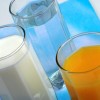 More than one-half of an adult human body weight is water. Water brings nutrients to the cells in our bodies and removes waste. Our bodies cannot function without an adequate water supply. This 2-page fact sheet was written by Linda B. Bobroff, Luisa Oliver-Cordero, and Emily Minton, and published by the UF Department of Family Youth and Community Sciences, 10. http://edis.ifas.ufl.edu/fy070
More than one-half of an adult human body weight is water. Water brings nutrients to the cells in our bodies and removes waste. Our bodies cannot function without an adequate water supply. This 2-page fact sheet was written by Linda B. Bobroff, Luisa Oliver-Cordero, and Emily Minton, and published by the UF Department of Family Youth and Community Sciences, 10. http://edis.ifas.ufl.edu/fy070
Alimentacion Saludable: Liquidos (FCS8569Span/FY071)
 Más de la mitad del peso del cuerpo humano adulto, es agua. El agua transporta nutrientes a las células en nuestros cuerpos y remueve los residuos. Nuestros cuerpos no podrían funcionar sin una fuente de agua adecuada. This 2-page fact sheet was written by Linda B. Bobroff, Luisa Oliver-Cordero, y Emily Minton, and published by the UF Department of Family Youth and Community Sciences, October 2012.
Más de la mitad del peso del cuerpo humano adulto, es agua. El agua transporta nutrientes a las células en nuestros cuerpos y remueve los residuos. Nuestros cuerpos no podrían funcionar sin una fuente de agua adecuada. This 2-page fact sheet was written by Linda B. Bobroff, Luisa Oliver-Cordero, y Emily Minton, and published by the UF Department of Family Youth and Community Sciences, October 2012.
http://edis.ifas.ufl.edu/fy071
High Blood Pressure: What You Need to Know (FCS8638/FY199)
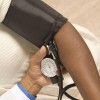 High blood pressure, also called hypertension, increases your health risks. If you have high blood pressure, you have a higher chance of getting heart disease or kidney disease or of having a stroke. This 4-page fact sheet was written by Linda B. Bobroff, and published by the UF Department of Family Youth and Community Sciences, October 2012.
High blood pressure, also called hypertension, increases your health risks. If you have high blood pressure, you have a higher chance of getting heart disease or kidney disease or of having a stroke. This 4-page fact sheet was written by Linda B. Bobroff, and published by the UF Department of Family Youth and Community Sciences, October 2012.
http://edis.ifas.ufl.edu/fy199
Healthy Living: Beating Barriers to Physical Activity (FCS8818/FY883)
 Being active can help you function better and maintain your independence. It also can reduce your risk for getting some diseases, such as diabetes, and help you manage health problems you may already have. If you’re not active, what’s stopping you from getting started? Read on to learn how to overcome some common barriers! This 2-page fact sheet was written by Jennifer Hillan and Linda B. Bobroff, and published by the UF Department of Family Youth and Community Sciences, September 2012.
Being active can help you function better and maintain your independence. It also can reduce your risk for getting some diseases, such as diabetes, and help you manage health problems you may already have. If you’re not active, what’s stopping you from getting started? Read on to learn how to overcome some common barriers! This 2-page fact sheet was written by Jennifer Hillan and Linda B. Bobroff, and published by the UF Department of Family Youth and Community Sciences, September 2012.
http://edis.ifas.ufl.edu/fy883
Healthy Eating: Folate (FCS8560/FY055)
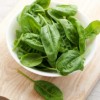 Folate is one of the B vitamins. Our bodies use folate to make new cells. Folate is especially important for women of childbearing age, pregnant and nursing women, growing children, and older people. If you don’t get enough folate in your diet, you could get anemia. You also could be at higher risk for heart disease, stroke, cancer, or memory problems. This 1-page large print fact sheet was written by Linda B. Bobroff, and published by the UF Department of Family Youth and Community Sciences, September 2012.
Folate is one of the B vitamins. Our bodies use folate to make new cells. Folate is especially important for women of childbearing age, pregnant and nursing women, growing children, and older people. If you don’t get enough folate in your diet, you could get anemia. You also could be at higher risk for heart disease, stroke, cancer, or memory problems. This 1-page large print fact sheet was written by Linda B. Bobroff, and published by the UF Department of Family Youth and Community Sciences, September 2012.
http://edis.ifas.ufl.edu/fy055
MyPyramid for Kids (FAR8047/FM356)
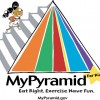 “In 2005, MyPyramid for Kids was launched with the positive slogan ‘Eat Right. Exercise. Have Fun.’ This new resource, targeting children ages six to eleven, is an excellent tool to help children improve their food and activity choices.” This 2-page Family Album Radio transcript was written by Ariadna M. Rodriguez and Linda Bobroff, and published by the UF Department of Family Youth and Community Sciences, August 2012.
“In 2005, MyPyramid for Kids was launched with the positive slogan ‘Eat Right. Exercise. Have Fun.’ This new resource, targeting children ages six to eleven, is an excellent tool to help children improve their food and activity choices.” This 2-page Family Album Radio transcript was written by Ariadna M. Rodriguez and Linda Bobroff, and published by the UF Department of Family Youth and Community Sciences, August 2012.
http://edis.ifas.ufl.edu/fm356
The Effects of Caffeine on Lactation (FAR0423/FM354)
 “Human milk is the preferred food for infants, with exceptional physiological benefits not only for the baby but for the mother as well. Mothers need to be aware, though, that many substances that they consume are excreted in breast milk and can profoundly affect the composition and adequacy of her breastmilk. Even caffeine, which many of us consume on a daily basis in our coffee, tea, cola drinks and chocolate, finds its way into breast milk.” This 2-page Family Album Radio transcript was written by Ashley Orynich and Linda Bobroff, and published by the UF Department of Family Youth and Community Sciences, August 2012.
“Human milk is the preferred food for infants, with exceptional physiological benefits not only for the baby but for the mother as well. Mothers need to be aware, though, that many substances that they consume are excreted in breast milk and can profoundly affect the composition and adequacy of her breastmilk. Even caffeine, which many of us consume on a daily basis in our coffee, tea, cola drinks and chocolate, finds its way into breast milk.” This 2-page Family Album Radio transcript was written by Ashley Orynich and Linda Bobroff, and published by the UF Department of Family Youth and Community Sciences, August 2012.
http://edis.ifas.ufl.edu/fm354
Registration and Licensure of Nutrition Professionals in Florida (FCS8765/FY690)
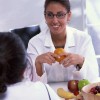 Registration and licensure of nutrition professionals exist to protect the public from people who are not qualified to practice as nutrition professionals, just as licensure of physicians protects the public from people who are not qualified to practice medicine. This 3-page fact sheet provides information about dietetic registration (a national credential) and licensure (a state-specific license). Florida has three credentials that allow people to legally practice as a nutrition or dietetics professional: Registered Dietitian (RD), Licensed Dietitian/Nutritionist (LD/N), and Licensed Nutrition Counselor (LNC). Written by Linda B. Bobroff, and published by the UF Department of Family Youth and Community Sciences, September 2012.
Registration and licensure of nutrition professionals exist to protect the public from people who are not qualified to practice as nutrition professionals, just as licensure of physicians protects the public from people who are not qualified to practice medicine. This 3-page fact sheet provides information about dietetic registration (a national credential) and licensure (a state-specific license). Florida has three credentials that allow people to legally practice as a nutrition or dietetics professional: Registered Dietitian (RD), Licensed Dietitian/Nutritionist (LD/N), and Licensed Nutrition Counselor (LNC). Written by Linda B. Bobroff, and published by the UF Department of Family Youth and Community Sciences, September 2012.
http://edis.ifas.ufl.edu/fy690
Nutrition for Health and Fitness: Fiber in Your Diet (FCS8130/HE697)
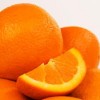 Fiber has many names, such as dietary fiber, total fiber, or just plain fiber. Eating foods that contain fiber is good for your health. This 6-page fact sheet provides tips on how to include foods with fiber in your diet. Written by Linda B. Bobroff, and published by the UF Department of Family Youth and Community Sciences, September 2012.
Fiber has many names, such as dietary fiber, total fiber, or just plain fiber. Eating foods that contain fiber is good for your health. This 6-page fact sheet provides tips on how to include foods with fiber in your diet. Written by Linda B. Bobroff, and published by the UF Department of Family Youth and Community Sciences, September 2012.
http://edis.ifas.ufl.edu/he697
Warning Signs of Anorexia (FAR8055/FM373)
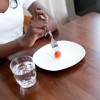 “With concerns about childhood obesity on the rise, the plight of young people with eating disorders such as anorexia nervosa may not be on many people’s minds. However, according to the American Academy of Child and Adolescent Psychiatry, between 5 and 10 million people, including 1% of American teens, have an eating disorder. Anorexia nervosa, an eating disorder characterized by excessive weight loss and severely distorted body image, is one of the most common psychiatric diagnoses in young women.” This 2-page Family Album Radio transcript was written by Jacqueline Endaya and Linda Bobroff, and published by the UF Department of Family Youth and Community Sciences, August 2012.
“With concerns about childhood obesity on the rise, the plight of young people with eating disorders such as anorexia nervosa may not be on many people’s minds. However, according to the American Academy of Child and Adolescent Psychiatry, between 5 and 10 million people, including 1% of American teens, have an eating disorder. Anorexia nervosa, an eating disorder characterized by excessive weight loss and severely distorted body image, is one of the most common psychiatric diagnoses in young women.” This 2-page Family Album Radio transcript was written by Jacqueline Endaya and Linda Bobroff, and published by the UF Department of Family Youth and Community Sciences, August 2012.
http://edis.ifas.ufl.edu/fm373
Enviroshopping for Teens (FCS8756/FY342)
 Every day, we make choices that impact our environment. This 3-page fact sheet will help you make environmentally friendly choices whenever you make purchases and encourage you to take a second look at items before throwing them away. Written by Linda B. Bobroff and R. Elaine Turner, and published by the UF Department of Family Youth and Community Sciences, September 2012.
Every day, we make choices that impact our environment. This 3-page fact sheet will help you make environmentally friendly choices whenever you make purchases and encourage you to take a second look at items before throwing them away. Written by Linda B. Bobroff and R. Elaine Turner, and published by the UF Department of Family Youth and Community Sciences, September 2012.
http://edis.ifas.ufl.edu/fy342